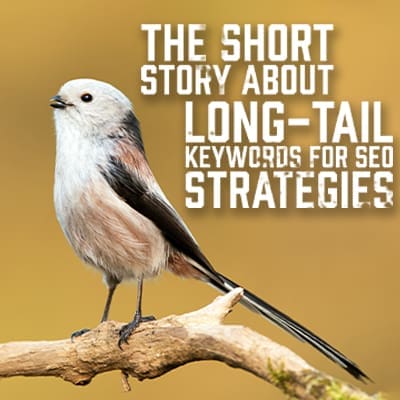At Paradux Media, we talk about search engine optimization (SEO) a lot. You might even say we’re obsessive about it. That’s because, in today’s world, a growing proportion of business for most companies is being directed via electronic channels. Take a look at these statistics:
 19.49% of consumers use Google (which accounts for 90%+ of internet searches) to find new products.
19.49% of consumers use Google (which accounts for 90%+ of internet searches) to find new products.- 45% of shoppers use Google to research a purchase they plan to make in a physical store.
- 23.77% of consumers use Google when looking for local business information.
- 24.21% of people use the internet to find a local business daily.
SEO is all about strategically planning and constructing a website so it will be seen favorably by an internet search engine (we focus on Google) and rank highly when consumers search for keywords and phrases related to it. For small and medium-sized companies, we recommend focusing on long-tail keywords for SEO strategies. These highly specific and targeted phrases not only help businesses rank higher in search engine results but also attract quality traffic and improve conversion rates.
What are keywords?
Keywords are words related to your business used to structure content on your website. The goal is positive matches between your keywords and those terms consumers search for, resulting in higher rankings. There are many technical elements around how keywords should be used for this to work, but one important guideline is that each page of your website should have a keyword or keyword phrase, and that keyword or phrase should only be optimized on one page of your website. (For example, you wouldn’t want every page of your website to be blasting “best yard care services in Amarillo.”)
Heads or tails? Using head terms vs. long-tail keywords for SEO strategies.
At a very broad level, there are two types of keywords: head terms and long-tail keywords.
Head terms are short, generic keywords. Everyone wants to rank highly for a head term. For example, head terms related to a yard care business could be “yard maintenance,” “mowing services,” or “lawn care.” An estimated 1,900 searches are performed each day for “yard maintenance,” so ranking highly for that term seems like a profitable venture.
However, there are some downfalls about head terms.
First, many companies have that same idea, making “yard maintenance” difficult to rank well for. In fact, about 268 million website pages are ranking for “yard maintenance” worldwide. That means you are competing against millions of other websites to try to get a top spot.
Second, people searching for head terms are most often in the initial phases of the customer journey. They may be figuring out the right questions to ask about a topic. Or, they may be researching something about a topic unrelated to purchasing at all.
Long-tail keywords, on the other hand, can be much more effective for your search rankings and customer conversions.
Long-tail keywords are longer and include specific phrases consumers are more likely to use when they’re closer to a point of purchase. Unlike short, generic head terms, long-tail keywords are highly targeted and reflect potential customers’ specific needs and intentions. For instance, while a short keyword like “yard maintenance” may be highly competitive, a long-tail keyword such as “best yard maintenance in Amarillo” is more precise and has a higher chance of converting leads into customers (just don’t overuse it!) You’ll have less competition to rank highly for the term; it’s highly relevant to your business, and customers searching for it will likely need your services.
Additionally, long-tail keywords can be less expensive to bid on in paid search campaigns (Google Ads, for example), making them a cost-effective choice for businesses with limited marketing budgets.
Another benefit is related to local SEO strategy. For small to medium-sized businesses that operate within specific geographic areas, long-tail keywords can be particularly advantageous for local SEO. By including location-specific terms in their long-tail keywords, companies can effectively target local customers actively seeking products or services within their vicinity. This localized approach can significantly boost foot traffic for brick-and-mortar stores and increase online sales for e-commerce businesses.
How do we use long-tail keywords for SEO strategies?
Every company is unique, so we avoid cookie-cutter approaches for developing strategies. The answer to this question depends on the type of company, its industry, and its customer base. However, for most of our clients, we use an outline approach and start by defining head terms. Those head terms should give us a rough sketch of how a website and its pages should be organized. Here’s an example of managing key terms for a small company focusing on localized services. Notice the combination of head term and long-tail keywords:
Home Page: Yard Maintenance in Amarillo
- Residential Lawn Care in Amarillo
- Residential Lawn Care Services in Amarillo
- Residential Lawn Maintenance Tips
- Can you write off your yard maintenance?
- Can your landlord hold you responsible for yard maintenance?
- How to create a low-maintenance yard.
- Commercial Lawn Care in Amarillo
- Commercial Lawn Care Services in Amarillo
- Typical Commercial Lawn Care Contracts
- What business owners should know about commercial lawn care.
- Should commercial lawn care contractors be licensed and bonded?
- How to evaluate the work of your commercial landscaper.
- Commercial Landscaping Services in Amarillo
Once we’ve defined the general outline, we fill in the blanks with relevant content, focusing on some head terms and a wide swath of long-tailed terms. We create high-quality blog articles, website content, and product descriptions that naturally incorporate long-tail keywords to improve organic search rankings and provide valuable information to potential customers.
Publishing regular blog articles boosts SEO for several reasons. For example, weekly publishing of relevant blog content helps businesses establish themselves as authoritative sources within their niches. It shows they are updating their website with fresh information–two critical criteria Google looks for in assigning search rankings.
Improve Your Digital Presence with SEO Services from Paradux Media.
If you’re not focusing on reaching customers via the web with a well-functioning website with an effective user interface and other aspects of search engine optimization, you’re realizing your company’s full potential. At Paradux Media, we work with companies nationwide to provide them with the SEO services they need to attract customers and achieve conversions on the web. This example of our focus on long-tailed keywords for SEO strategies that work for small to medium-sized businesses is just one way we differentiate ourselves from the competition. We know what makes sense for our clients and are invested in their success. Contact us today to learn more about joining our flock and how we can help you transform your online presence.
- Published: February 26, 2024
- Author: Angela Peacor
- Blog: Marketing Intelligence Report
- Category:
- Tags: Google Search, keyword, long-tail, Search, term
- Comments:
Quacktastic Reviews:
“The team at Paradux was wonderful to work with. Their expertise, assistance, grace, and personality were such a joy in our partnership on a video…
Always willing to work with us on our (sometimes very specific) marketing needs.
Excellent team to work with! Mike and Tisha are fantastic at coming up with new ideas while staying true to my companies vision, values, and…

Operating a restaurant and bar is hard enough. It demands wearing many hats. Promotions and marketing is not one of them any longer since we…









Can not recommend this team enough. What started as a one-time website re-design has evolved into Paradux handling the vast majority of our marketing. Business…









We would not be able to run as smoothing, quickly, or efficiently if it was not for Paradux Media Group. Tisha and team is hands…









Recently, I had the opportunity to work with Paradux Media on a website build, and I just couldn’t have been happier with the process and…









Mike and his team are well known within the region and marketing community as an insightful industry leader. If you are looking for a Marketing…









Paradux Media is a very professional group, and they know what they’re doing. Whether they are placing buys for clients, or producing high-quality TV spots,…









Paradux helped build my business in all capacities. Without them, I would never have had the resources and ability to get so much accomplished –…










 19.49% of consumers use Google (which accounts for 90%+ of internet searches) to find new products.
19.49% of consumers use Google (which accounts for 90%+ of internet searches) to find new products.








